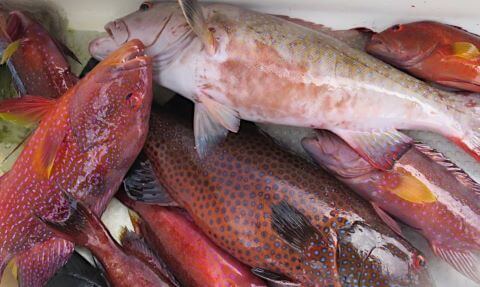
Ciguatera fish poisoning is a type of food poisoning caused by consuming certain fish that live in tropical and subtropical coral reef areas such as Moray eel, Grouper, Star snapper, Japanese scavenger and Parrot fish.
It is caused by toxins such as ciguatoxin, but it mainly generates from dinophyceae that are stuck to algae. The process of ciguatera occurring involves the food chain. Even if a fish itself doesn’t originally contain toxins, an herbivorous fish may eat algae that turns it toxic. That fish may be eaten by a carnivorous fish, which then accumulates high concentrations of ciguatera in its body. When a human consumes the carnivorous fish it can cause food poisoning in the human. There are as many as 300 species of fish that contain ciguatoxin. The ciguatoxin, which causes the food poisoning, cannot be killed by boiling or grilling, so it can’t be prevented through food preparation.
Symptoms of this food poisoning mainly consist of sensory nerve abnormalities, muscle soreness, itchiness and abdominal pain, but it is rarely fatal. However, it takes quite a long time to recover from compared to other toxins and the average recovery time is said to be two to three weeks. It is vital to diagnose ciguatera fish poisoning as soon as possible. Most symptoms develop within one or two hours and up to to 24 hours after consumption and one unique symptom is dysthermesthesia. This is a form of dysesthesia in which touching cold things feels like its burning. It occurs one to two days after the poisoning and is a known characteristic of ciguatera fish poisoning. Another characteristic symptom of ciguaterafish fish poisoning is joint pain within 24 hours after consuming the fish. In any case, it is important to be seen by a specialist as soon as possible.
Incidentally, the name ciguatera came from Spanish immigrants to Cuba as a name for food poisoning caused by the cigua shellfish in that region. Later it was also used to describe fish poisoning, which causes similar symptoms.
[sc_apply url=”https://sushiuniversity.jp/apply/”]
We hope this information will be helpful.

Revision date: May 9, 2022
Share this article